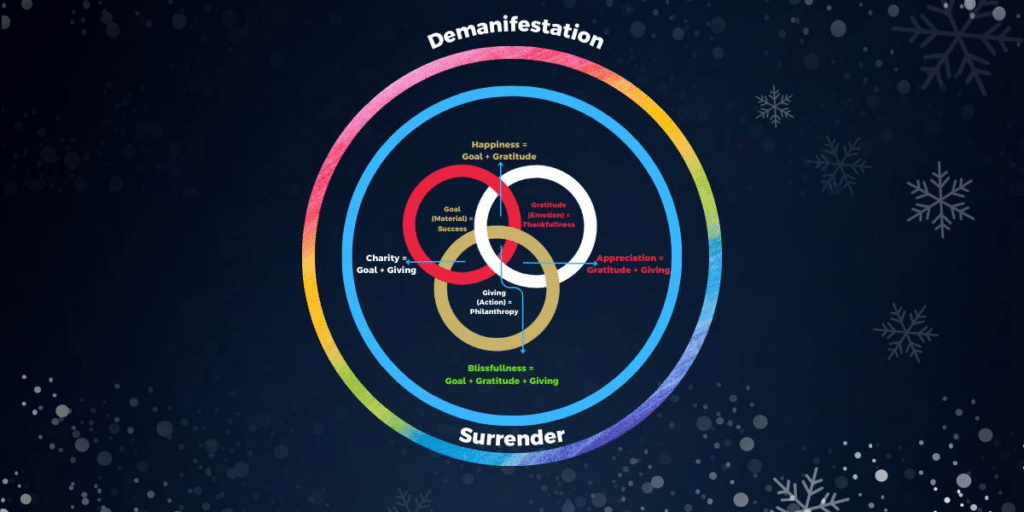Based on the discussions with Ranjeet S Mudholkar, Principal Coach and CEO,
Next League Program for EB1A Green Card
Step into the realm of the unseen, where the boundaries of reality dissolve and profound transformations await. Join us on an extraordinary journey as we delve into the invisible realm of existence, guided by the wisdom of Ranjeet Mudholkar, Principal Coach and CEO of the Next League Program for EB1A Green Card. Prepare to be captivated by the Power of Demanifestation and the profound influence it holds over our lives.
“Is it possible that the secret to true happiness lies not in the physical reality we perceive but in the intangible realm beyond?” This provocative question guides our exploration with Ranjeet Mudholkar, Principal Coach and CEO, Next League Program for EB1A Green Card, as we journey into the invisible terrain of existence and discover the profound influence of the unmanifest domain of our lives.
The term “unmanifest” often rises like a wave in discussions on spirituality and philosophy, alluding to an ultimate reality that transcends the visible, material world—the inception of all that exists. But what if we reverse this process? And why should we do it? Welcome to the domain of “Demanifestation” – a fascinating concept introduced by Mudholkar that reveals the transformative power of returning the manifest to its unmanifest state.
Like a wellspring flowing unseen beneath the earth, the unmanifest refers to an underlying truth or state of existence that transcends the material world we perceive. It’s like the invisible roots of a tree, nourishing everything we see above ground. Demanifestation symbolises the transformation of the tangible back into the intangible, a return to the unmanifest state.
As we wander through the labyrinth of human experiences, Mudholkar offers an innovative perspective on success and happiness, deeply rooted in the Principle of Demanifestation. He posits that as much as we give form to desires, both consciously and by default, Demanifestation also naturally unfolds. Our sufferings, he suggests, springs from our denial to recognize this truth. As we navigate the intricate weave of life, the process of Demanifestation becomes integral. This involves disentangling ourselves from those desires that spring from narrow ambitions and self-serving quests. It’s the necessary shift that turns our journey from merely chasing goals into the pursuit of success, joy, and an ineffable realm beyond. And as we shed the superficial, we can then direct our energies to manifest what truly serves the greater good. This is the process, the transformation that elevates the self, promoting personal growth while contributing to the broader tapestry of life. By consciously acknowledging and accepting Demanifestation, we unearth a profound wisdom: Pain is unavoidable, but suffering is a choice.
Demanifestation may seem initially nebulous, so let’s break it down with real-life applications and practical advice to make it more relatable and actionable. Consider a sculptor creating a statue. The statue, a physical, tangible object, also embodies the unseen, the sculptor’s vision, creativity, and intention. This remains unmanifest. However, when the statue crumbles or returns to dust, what endures is the unmanifest. Similarly, when we practise Demanifestation, we return to our original state, the state of pure consciousness, the unmanifest, where we are not bound by our physical existence.
This shift towards the unmanifest, this metamorphosis, doesn’t happen overnight. Like the gradual unfurling of a rose, it requires persistence and conscious effort. This belief finds resonance in various philosophical and spiritual teachings across cultures. In Buddhism, the concept of ‘Anatta’ or ‘no-self’ shares an uncanny resemblance to Demanifestation.
The practical application of this philosophy is beautifully encapsulated in Mudholkar’s five-step approach: Exploring your inner universe, releasing your grip, engaging in spiritual exploration and self-study, bonding with the divine, and recognizing the interconnectedness of all things. Recognising this interconnectedness of all things is about acknowledging that we are all part of the same collective consciousness. This realisation cultivates compassion, kindness, and empathy towards ourselves and others, enhancing our relationships and overall well-being.
Additionally, Mudholkar encourages us to remain committed to our practice, surround ourselves with like-minded seekers, stay open and receptive to life’s shifts, and cultivate a sense of gratitude and generosity. These practices provide a roadmap for our journey towards Demanifestation.
Moreover, in the context of Demanifestation, it’s essential to understand two key terms: Surrender and Samadhi (Transcendental Consciousness). Surrender, as Mudholkar describes it, is the art of letting go of our ego, our illusion of control, and embracing a power greater than ourselves. It’s a crucial piece of the puzzle, but not the only piece. And Samadhi? Samadhi is a state of pure consciousness- an encounter with the Divine where the line of demarcation between the Self and the Universe dissolves. It is in this moment that we transcend the limitations of our individual identities and become One with Everything. It’s the state of supreme bliss, free from all desires, fears, and the tyranny of the ego. Samadhi is a state of being, a peak experience, while Demanifestation is the path leading up to it. They’re intertwined yet distinct as Mudholkar beautifully summarises “Demanifestation is the Journey, Surrender is the Art, and Samadhi is the Destination.”
This journey, as profound as it may seem, is accessible to all. The beauty of Demanifestation lies in its universality. Regardless of our religious or philosophical leanings, regardless of our socioeconomic status, we can all embark on this voyage towards consciousness. It doesn’t require any material resources, only an open mind, a willing heart, and a firm commitment to personal growth.
By virtue of Demanifestation, we realise our existence as spiritual beings in our human experience. “Success” as Mudholkar says, “may be defined as an accomplishment of a goal by undertaking focussed actions within a given time frame for a specific purpose; it’s a balance sheet, an account on a specific day, for a given period only. Your Success will manifest itself as Happiness only with mindfulness of Gratitude. And if there is also a ‘Gratitude in Action’ viz. Giving, then you are in a state of Blissfulness provided the Success is based on your own terms & goals and it is not a reflection of others’ beliefs. Please note that you cannot achieve anything by ‘inaction’.
Blissfulness, in essence, is the ‘sweet spot’ between achieving Success on your terms and goals, maintaining Gratitude, and the virtue of Giving. Depending on your Actions’ intensity, your Gratitude’s depth, and your Giving’s degree, you are Blissful by merely engaging in your activities. Consistent Blissfulness evolves you into a state of Self Actualization wherein all your Actions personify Giving, and you learn to Surrender.”
Mudholkar further adds “You can reverse engineer the state of Blissfulness and Self Actualization by practising Giving, cultivating Gratitude, and taking Actions on your terms to achieve your Goals: Or it can simply be achieved by Surrendering.” In this way, your desired Success becomes a byproduct of your conduct. It is Mudholkar’s unique philosophy of Demanifestation that urges us to rethink our conventional notions of success and happiness. We are prodded gently towards a state of bliss, achieved not by acquiring less or more, but by aligning our actions with our values and goals, cultivating gratitude, and embracing the virtue of giving. This Demanifestation doesn’t introduce a mere detour in our journey to achieve worldly goals, but a profound realignment with the supreme reality woven into existence’s very fabric.
But now an important question that comes up is – Does Surrender mean giving up on our tangible goals and surrendering to the Divine? Ranjeet says, “This would be a misinterpretation. Surrendering, as discussed in Demanifestation, is not a leap of faith as Albert Camus speaks on in Absurdism – while both involve a form of letting go, the former is an embracing of one’s inherent potential and the tangible and intangible aspects of life’s journey, whereas the latter is a self-deceptive evasion from the inherent meaninglessness of existence”. In fact it would be apt to say that Surrendering as described by Mudholkar shares a significant similarity with the concept of ‘Confrontation’ as spoken by Albert Camus in Absurdism – both involve a courageous and direct engagement with the realities of existence, embracing the inherent complexities and finding personal meaning within the context of life’s inherent Absurdity, leading to a deeper understanding of oneself and the world.
Thus, the journey of Demanifestation, as Mudholkar so astutely observes, is not a matter of abdicating responsibility or turning away from the material world. Instead, it calls for a conscious effort to delve beneath the superficial layers of existence, to unearth the unmanifest reality that serves as the crucible for all creation. To illustrate, he gives an example – Ravi, a high-achieving professional working in the US on an H1B Visa, who aspires to obtain an EB1A Green Card, a Green Card popularly known as ‘Einstein Visa’ reserved for highly accomplished professionals.
Ravi’s Green Card is his tangible goal. It embodies his aspiration for stability, his desire to provide a secure future for his family, and his ambition to contribute meaningfully to his professional field in the US. However, underneath this manifest goal lies a deeper, unmanifest reality. Alongside this, he has a desire to create a new software that could potentially help millions of people.
Ravi’s motivations are not solely about improving his financial condition or gaining recognition. Instead, they are rooted in his unmanifest reality—his innate potential, resilience, and passion for his profession. These motivations focus on exploring opportunities for growth and development and making a positive impact on the lives of others. The unmanifest in Ravi’s case is his expertise, his resilience, his commitment to his family, and his passion for his profession. These qualities are intangible and unseen, yet they are the driving force behind his pursuit of the Green Card. They are the unmanifest foundation that supports his manifest reality of seeking EB1A Green Card.
As Ravi navigates the complex and often overwhelming process of applying for the EB1A Green Card, he encounters setbacks and challenges. These include delays, hurdles, and moments of doubt and uncertainty. In these moments, the tangible goal – the Green Card – may seem elusive, even unattainable. Yet, Ravi’s emotional resilience does not waver. When setbacks occur, Ravi focuses on seeing them not as obstacles, but as opportunities for growth and learning. He understands that his journey towards the Green Card is not just about the end result, but about who he is becoming in the process.
This is where the stage of Demanifestation comes in. Ravi realises that the EB1A Green Card does not define him, but the process and the resilience he employs to attain it, certainly embodies him. He starts practising Demanifestation by recognizing the power of the unmanifest and allowing it to guide him. He is not bound by his physical, tangible goal. Instead, he is rooted in his unmanifest qualities and values, which continue to support and guide him regardless of the external circumstances. This recognition represents Ravi’s Surrender, a critical stage in the process of Demanifestation. He surrenders not his objective but his attachment to the outcome, understanding that his worth is not defined by the attainment of the Green Card, but by the unmanifest qualities that drive him. In the midst of his journey, Ravi undergoes a powerful awakening, much like the realisation described in Bhagwat Gita C 10: V 20-40. He becomes aware of his own Divine and majestic connection to the ultimate consciousness, the unmanifest.
One day, Ravi achieves his goal. He obtains his EB1A Green Card. But in that moment, he realises something profound: while the Green Card is a significant achievement, it is not the end of his journey. It is a milestone, a tangible manifestation of his unmanifest potential. But the unmanifest – his resilience, his commitment, his passion – thrives.
Ravi celebrates this achievement not as an end but as a tangible manifestation of his unmanifest potential. He reflects on his journey and expresses gratitude for everyone who supported him. In this way, the process of Demanifestation allows Ravi to achieve his goals while remaining grounded in his inner state of consciousness, his unmanifest reality. It enables him to navigate the complexities of life with grace and resilience, and to find deep fulfilment and contentment regardless of the external circumstances. Thus as Mudholkar puts “Demanifestation, much like the celestial ballet of Shiva’s Tandav, performs a divine rhythm. Like Tandav graces us with the dance of creation and destruction, Demanifestation performs a harmonious interplay of the manifest and unmanifest, the tangible ambitions and the intangible forces of our existence.” This is the transformative power of Demanifestation.
Finally, to perceive and understand reality as it truly is, free from personal biases and interpretations, one must accept everything – “AS IT IS”. It involves recognizing the underlying unity in the world beyond superficial differences. This transcends dualities and reveals the interconnectedness of all things. Such perception brings liberation, freedom from suffering, and a deep connection with ultimate reality. It is a state of pure awareness where the observer and observed merge, revealing undifferentiated consciousness. Mudholkar adds “Embracing “AS IT IS” is not an intellectual retreat, but a profound experiential insight and a shift in the Consciousness. It leads to Absolute Awakening and Final Liberation, while being grounded in reality.”
As our expedition through the uncharted territories of Demanifestation comes to a close, we are left with a profound understanding of our true nature and the boundless potential that resides within us. The transformative power of Demanifestation calls us to embrace the unseen, to relinquish our attachments, and to align our actions with the unmanifest forces that guide us. In this journey, we discover that true contentment and fulfilment are not found in the external trappings of success, but in the depths of our own consciousness. As we navigate the complexities of existence, may we remember the lessons learned from Demanifestation, and may we embark on a path of self-discovery, liberation, and profound connection with the ultimate reality, a journey from the material to the un-material viz. from the manifest to the unmanifest- and back!.


















